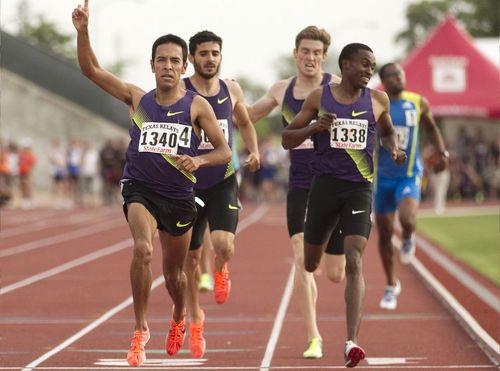As runners we generally hold ideal running form as some unattainable thing that probably only Olympians and Boston qualifiers have ever known. Coming from a movement specialist, I’ll tell you I have watched those high level runners compete and win with obvious problems in their running form. I do believe genetics play a role as well as the appropriate training schedule. But it is amazing to see what the human body is capable of when there is intense pressure to win.
The human body subconsciously finds ways to make it do whatever it is we want it to at the moment…even at the expense of injury later. C’mon, you know what I mean. You’re pushing through on a longer run and you’re second guessing your decision because that right knee has been bugging you during training over the past two weeks. Then you go through a bit of a gut check and ask yourself if you really want to do it. “How much will it hurt”, “How close is my race date?”, “I’m behind on my training”. After you decide to charge ahead, your body then begins to lower the volume of your pain signals and opens the adrenaline flood gates. Now that you’re thoroughly psyched up, unknowingly your right leg begins to move a little differently to minimize the trauma to your knee. At the same time, your left leg starts to push off a little more because you’ve lost efficiency in your right leg and you must keep up that sub 8 minute pace to make sure you PR on race day. If this keeps going, it will only be a matter of time before something on either leg begins to hurt. Eventually, it will catch up to everyone, even Olympians and Boston qualifiers.
Image from: http://www.statesman.com/news/sports/ut-ex-leo-manzano-takes-aim-at-olympic-1500-meters/nRprz/
Ideal running form is slightly different for everyone. It depends on your body shape and size, your gender, your pace and your running surface. Good running form should be the most energy efficient way that your body can carry itself for the desired distance. It changes for sprinting compared to distance running. It should always focus on using your energy to drive your body forward. Running injuries are an obvious indicator that your running form is off. Low intensity aches, pain or discomfort tend to be the precursor for a bigger injury later down the line.
As a physical therapist, the most common problems I tend to see in runners are over striding and not picking up the knees enough. Over-striding is more common in shorter people because they may be trying to take tall person-sized steps. It frequently leads to back and hip pain. Check that your are not dragging your feet by listening to your feet interact with the ground. If you do this, you may simply need to make an effort to raise your knees slightly higher throughout your run. Sure it is more effort to raise your knees, but understand that dragging your feet makes you waste precious energy.
If you are dealing with anything like this, don’t waste time that you could spend on training. Ask your physician for a prescription to see a physical therapist to have it addressed.

